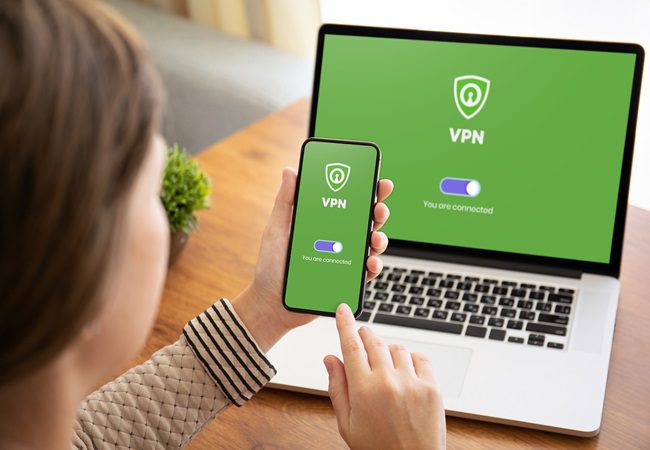Securing the Virtual Workspace: Cybersecurity Best Practices for Remote Workers in 2024

Introduction:
In the ever-evolving landscape of work, remote collaboration has become a cornerstone of modern business operations. As remote work continues to proliferate, so do the cybersecurity challenges associated with it. In this article, we’ll delve into the cybersecurity best practices tailored for remote workers in 2024. Whether you’re a seasoned remote professional or just stepping into the virtual workspace, implementing these practices is crucial to safeguarding sensitive information and maintaining a secure digital environment.
Secure Network Connections:
When working remotely, the first line of defense is a secure network connection. Utilize Virtual Private Network (VPN) services to encrypt your internet connection, ensuring that data transmitted between your device and the corporate network remains confidential. Choose reputable VPN providers and enable multi-factor authentication for an added layer of security.
Regular Software Updates:
Keeping your operating system, applications, and security software up-to-date is a fundamental yet often overlooked cybersecurity practice. Software updates often include patches for known vulnerabilities, safeguarding your system against potential exploits. Set up automatic updates whenever possible to ensure you’re protected against the latest threats.
Strong Password Policies:
Implementing strong password policies is paramount for remote workers. Utilize complex passwords with a combination of uppercase and lowercase letters, numbers, and symbols. Avoid using easily guessable information such as birthdays or names. Consider using a reputable password manager to generate and store complex passwords securely.
Multi-Factor Authentication (MFA):
Multi-Factor Authentication adds an extra layer of security by requiring users to provide multiple forms of identification before accessing accounts or systems. Implement MFA for your email, collaboration tools, and any other platforms that store sensitive information. This additional step significantly enhances your overall cybersecurity posture.
Endpoint Security:
As a remote worker, your device is your gateway to the virtual workspace. Ensure your endpoint security is robust by installing reputable antivirus and anti-malware software. Regularly scan your device for potential threats and, if applicable, leverage endpoint detection and response (EDR) solutions to proactively identify and mitigate security incidents.
Secure Video Conferencing Practices:
With virtual meetings becoming the norm, secure video conferencing practices are essential. Avoid using default settings that may compromise security. Utilize waiting rooms to control participant access, set meeting passwords, and update your video conferencing software regularly to benefit from the latest security enhancements.
Data Encryption:
Encrypting sensitive data is a critical measure, especially when transmitting information over the internet. Use encryption tools for emails, file transfers, and any data storage solutions. This ensures that even if data is intercepted, it remains unreadable and protected from unauthorized access.
Cloud Security Awareness:
As remote work often relies on cloud-based services, it’s crucial to be aware of cloud security best practices. Understand the security features of your chosen cloud service provider, implement access controls, and regularly audit and monitor your cloud accounts for any suspicious activities.
Remote Access Policies:
Establish clear remote access policies for your organization. Define who has access to what resources and under what conditions. Implement role-based access controls to ensure that employees only have access to the data and systems necessary for their specific roles. Regularly review and update access permissions based on changing job responsibilities.
Employee Training and Awareness:
Human error remains one of the leading causes of cybersecurity incidents. Provide ongoing training to remote workers on the latest cybersecurity threats and best practices. Heighten awareness of phishing attacks, social engineering tactics, and the importance of adhering to security policies. A well-informed workforce is a resilient one.
Regular Backups:
Data loss can occur due to various reasons, from hardware failures to cyber-attacks. Regularly back up your important files and documents to a secure location. Cloud-based backup solutions offer convenience and accessibility while ensuring your data remains protected and recoverable in the event of a system failure.
Incident Response Plan:
Prepare for the unexpected by having a well-defined incident response plan in place. Clearly outline the steps to be taken in the event of a security incident, including reporting procedures and communication channels. Regularly test and update the incident response plan to adapt to the evolving threat landscape.
Conclusion:
As remote work becomes a standard practice, prioritizing cybersecurity best practices is non-negotiable. The virtual workspace demands a heightened awareness of potential threats and a proactive approach to safeguarding sensitive information. By adhering to these cybersecurity best practices tailored for remote workers in 2024, individuals can contribute to creating a secure digital environment, ensuring the confidentiality, integrity, and availability of data in an era where remote collaboration is not just a trend but a fundamental aspect of the modern work landscape.





